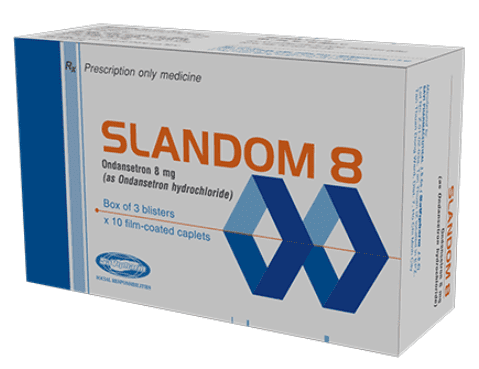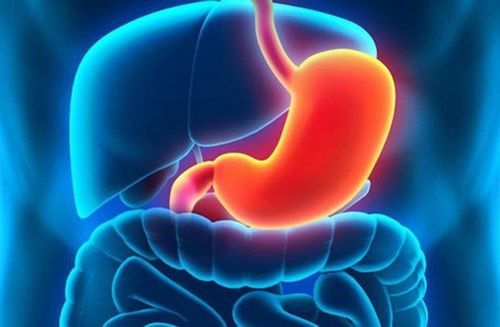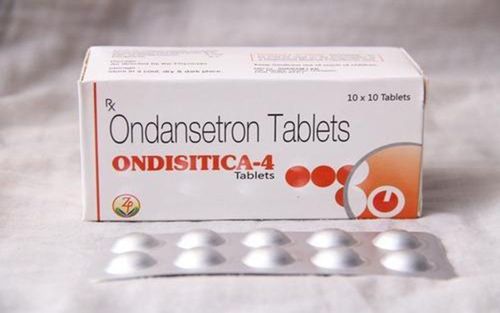This is an automatically translated article.
Neuroendocrine tumors are tumors that begin to form in the digestive system, which can be life-threatening if treated at a late stage. Therefore, understanding the causes and symptoms of carcinoid tumors will help patients choose the appropriate treatment.
1. What are Carcinoids?
Carcinoid is a tumor formed in the neuroendocrine system. This system is made up of cells spread throughout the body, commonly known as neuroendocrine cells, which act similarly to neurons and endocrine cells, specifically:
Neurons: Use electrical impulses to send signals. Endocrine cells: Help make up glands such as the pancreas and thyroid. These glands release thyroid hormones and insulin, which are used to communicate with other organs in the body. Neuroendocrine tumors usually start in the cells of the organs that make this hormone. As research shows, carcinoid tumors tend to start in the digestive system (including the stomach, esophagus, and intestines). Because this tumor comes from hormone-producing tissues, many of the side effects of carcinoids can be related to incorrect levels of different hormones in the body.
Carcinoid tumors can start in certain locations in the body, mainly in 3 main areas:
Anterior intestine: Stomach and lungs. Middle Intestine: The appendix, small intestine, and colon (first part of the large intestine). Posterior Intestine: The last part of the large intestine, rectum and organs of the genital tract (testicles, ovaries).
2. What causes the formation of neuroendocrine tumors?
According to research, people at high risk for neuroendocrine tumors usually include women, people over 60 years of age, and African-Americans. An estimated 4,000 new cases of pulmonary carcinoid are diagnosed each year and about 8000 are related to the digestive system.
Neuroendocrine neoplasms can be caused by the following genetic syndromes:
Multiple endocrine neoplasia (MEN) type 1 : This is a rare genetic syndrome, which affects about 10% of cases. The patient developed carcinoid tumors. Zollinger-Ellison syndrome: This syndrome can occur on its own or stem from multiple endocrine neoplasia type 1. This is an overproduction of acid in the stomach lining and increases the risk of developing carcinoma. as well as other tumors. Von Hippel-Lindau syndrome: Increased risk of developing carcinoid tumors in the pancreas. Neurofibromatosis: Increases the risk of carcinoid tumors in the stomach. Tuberous sclerosis: Increases the risk of developing carcinoid tumors. Atrophic gastritis: Causes inflammation of the stomach lining and increases the risk of stomach cancer.
3. Signs to recognize neuroendocrine tumors
In the early stages of development, neuroendocrine tumors rarely cause symptoms or signs of their presence. It is not until the carcinoid tumor begins to grow or spread to other organs that symptoms arise.
Depending on the organ affected by the tumor, the patient will experience different signs, specifically:
Carcinoid tumor in the small intestine: Causes intestinal obstruction / bleeding. Carcinoid tumor in the colon: Causes intestinal bleeding. Carcinoid tumor in the rectum: Causes pain or bleeding in the rectum. Because neuroendocrine tumors tend to grow slowly, the symptoms of the disease are slow to manifest, which delays the time of diagnosis and treatment. The most distinctive symptom of neuroendocrine tumors is the carcinoid syndrome – which is formed when the tumor releases substances such as histamine, serotonin and substance P. In addition, this syndrome can also appear due to the patient's digestion consuming foods rich in tyramine such as chocolate, blue cheese, or ethanol (beer, wine).
Carcinoid syndrome tends to affect mainly patients with neuroendocrine tumors of the small intestine. However, they do not cause symptoms until the cancer has spread to the liver. This condition occurs because excess hormones released by carcinoid tumors in the intestines are broken down by the liver. In addition, carcinoid tumors in other non-gastrointestinal organs or lungs can also cause carcinoid syndrome.
The following are typical symptoms of carcinoid syndrome caused by neuroendocrine tumors:
Scalp tightness or flushing (hot flashes) within minutes to hours. This symptom occurs because the neuroendocrine tumor releases histamine or tachykinin (substance P - dilates blood vessels). Diarrhea (occurs in about 78% of people with carcinoid syndrome), which can occur several times or up to 30 times a day. This is because Carcinoid tumors release serotonin, a neurotransmitter. Tachycardia and hypotension due to dilation of blood vessels. Bronchospasm is similar to that in asthma, causing shortness of breath and wheezing because carcinoid tumors secrete bradykinin or serotonin. Heart disease or right-sided heart failure caused by neuroendocrine tumors that release large amounts of serotonin in the blood causes damage to the heart, leading to fibrosis, edema of the limbs, or an enlarged heart. Pellagra with manifestations of dermatitis, dry skin, stomatitis, glossitis, psychosis and diarrhea. This condition usually occurs due to low levels of niacin (vitamin B3) in the body.
4. Stages of neuroendocrine tumors
Neuroendocrine tumors are classified into the following specific stages:
Localized: The tumor has not spread outside the wall of the organ / where it started. Regional progression: The tumor has spread beyond the confines of the starting organ and into nearby tissues or lymph nodes. Metastasis: The tumor has spread to distant organs and tissues. Neuroendocrine tumors may develop locally in organs including the stomach, duodenum, jejunum, ileum, peritoneal canal, colon, pancreas, and appendix. The staging and type of carcinoid tumor helps doctors assess the prognosis and treatment options available to the patient.
5. Methods of diagnosing neuroendocrine tumors
Usually, neuroendocrine tumors are discovered incidentally through surgery or a certain procedure, such as an appendectomy. Currently, neuroendocrine tumors are usually diagnosed by the following tests:
5.1 24-hour urine collection test This is considered one of the first diagnostic tests ordered to look for stool products. destroy serotonin. The 24-hour urine collection test is performed using the following procedure:
Measurement of 5-hydroxyindoleacetic acid compound (5-HIAA) in 24-hour urine. Patients should fast and take medications during the test as they can increase or decrease 5-HIAA levels, leading to erroneous results. A normal concentration of 5-HIAA in the urine is 2–8mg/day, if greater than 100mg/day indicates signs of carcinoid syndrome. People with metastatic neuroendocrine tumors tend to have elevated 5-HIAA levels but do not show signs of carcinoid syndrome. Urine tests are not useful for diagnosing neuroendocrine tumors of the anterior part (lungs and stomach) because they do not produce 5-HIAA. 5.2 Blood tests The patient may also have a blood test done if the urinalysis does not provide a specific diagnosis. A blood test that measures 5-HIAA levels in the fasting blood. Other blood tests may also be done, including a test for substance P, Chromogranin A, Kallikrein, and Bradykinin.
5.3 Epinephrine (Adrenaline) Stimulation Test If the 5-HIAA blood test does not provide an accurate diagnosis, your doctor may order an Epinephrine (Adrenaline) stimulation test. Your doctor will administer intravenous epinephrine to relieve symptoms associated with carcinoid syndrome and confirm whether a neuroendocrine tumor is causing the symptoms of carcinoid syndrome.
During the intravenous injection of Epinephrine, the patient's blood pressure, heart rate, and facial expression will be closely monitored. The initial dose is usually 2mcg, then increased to 2mcg every 5 minutes until symptoms develop to a dose of 10mcg. If a carcinoid tumor is present in the body, signs such as increased heart rate, flushing, and decreased blood pressure will appear 1-2 minutes after one of these doses is injected.
5.4 Pentagastrin test Pentagastrin is a polypeptide, which plays a role in promoting the body's production of pepsin (digestive enzyme) and gastric acid. Pentagastrin will be administered intravenously and identify the symptoms of flushing associated with neuroendocrine tumours.
5.5 Imaging tests Performing imaging tests can help your doctor locate a tumor after making a diagnosis using one of the methods above. In the absence of carcinoid syndrome, imaging may be the first diagnosis indicated to look for a tumor.
5.6 Barium Tests This test is used to look for neuroendocrine tumors, which cover the gastrointestinal tract. Outlining makes radiographic diagnosis clearer.
Swallow Barium: Helps locate tumors in the upper digestive tract, such as in the stomach, esophagus and first part of the small intestine. Barium enema: Works in the same way as swallowing Barium, using a contrast medium injected into the rectum to help check the rectum and colon for the presence of tumors. 5.7 Diagnosing neuroendocrine tumors with a scanner Using a scanner helps to locate the tumor, especially when the tumor has spread. There are two types of scans that use radioactive substances that bind to octreotide and then bind to somatostatin receptors on NET cells, including the indium -111 octreotide scan and the Ga-68 dotatate scan.
5.8 Other Diagnostic Tests for Neuroendocrine Tumors In cases where a carcinoid tumor is found through surgery or imaging, urine and blood tests, your doctor will continue to recommend other procedures to bring about make accurate conclusions, including:
Endoscopy. Colonoscopy, direct examination of the rectum and colon. Bronchoscopy, which examines the airways of the lungs to detect tumors. Endoscopic ultrasound or EUS helps look for carcinoid tumors that have invaded normal tissue. Biopsy.
6. Treatment methods for neuroendocrine tumors
Treatment options for neuroendocrine tumors will depend on the location of the tumor, medical history, and general health of the patient. Total tumor resection is the treatment of choice for people with locally advanced carcinoid tumors. In addition, the patient may also receive radiation therapy or chemotherapy depending on certain factors as assessed by the physician.
For patients with symptoms of carcinoid syndrome, the doctor will prescribe hormone therapy to control the disease. The substance commonly used in this therapy is the hormone somatostatin, which helps regulate the endocrine system and prevents the release of other hormones. Somatostatin can reduce hot flashes, wheezing, and diarrhea caused by carcinoid syndrome in people with neuroendocrine tumours.
Certain medications are also helpful for patients with carcinoid tumors, including immune system boosters (Interferon), H1 antagonists (Cyproheptadine), or H2 antagonists (Famotidine).
Currently, Vinmec International General Hospital is the address for high quality medical examination and treatment. The hospital gathers a team of doctors and experts from major hospitals and many parts of the world. The system of modern and advanced equipment will serve the examination process to get the most accurate results. Thanks to good medical quality, Vinmec has always been highly appreciated by experts and trusted by customers for many years.
Please dial HOTLINE for more information or register for an appointment HERE. Download MyVinmec app to make appointments faster and to manage your bookings easily.
Reference source:oncolink.org












